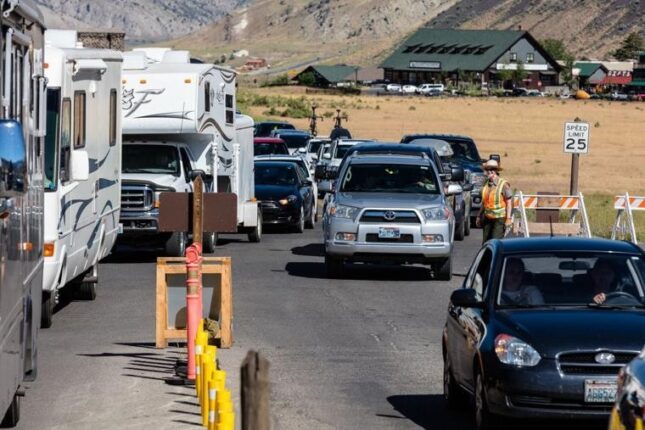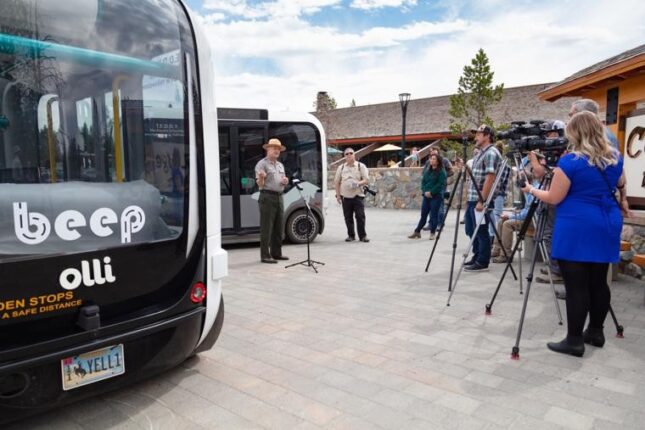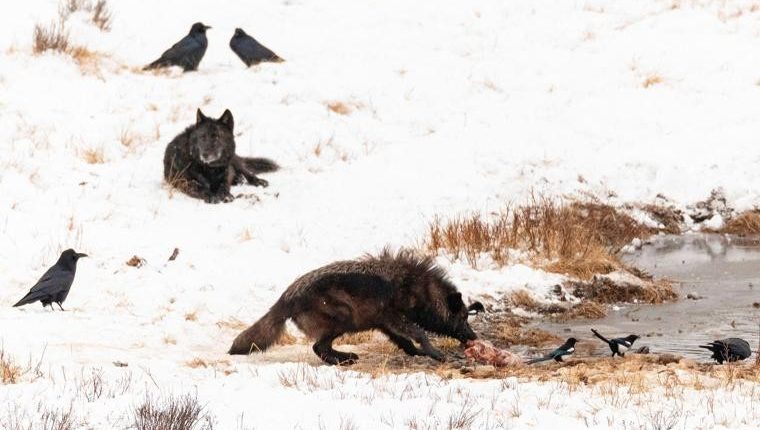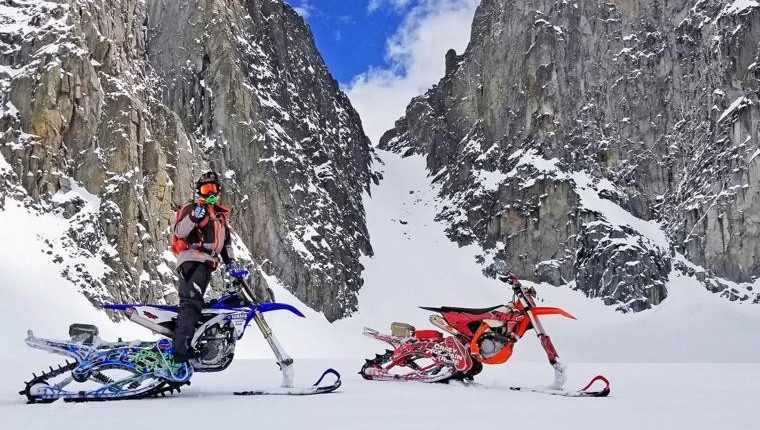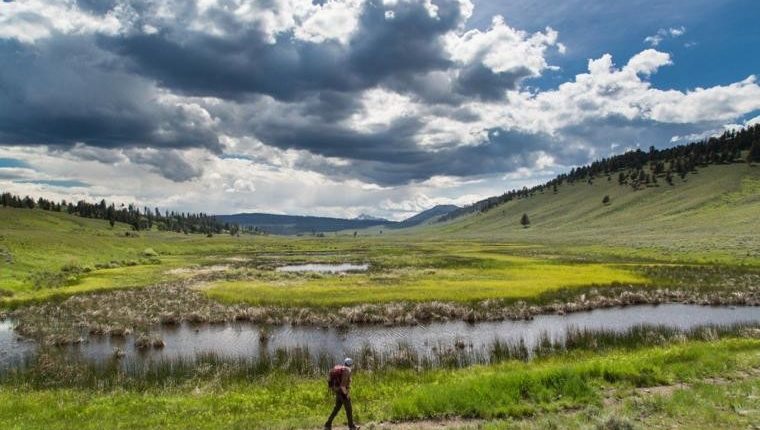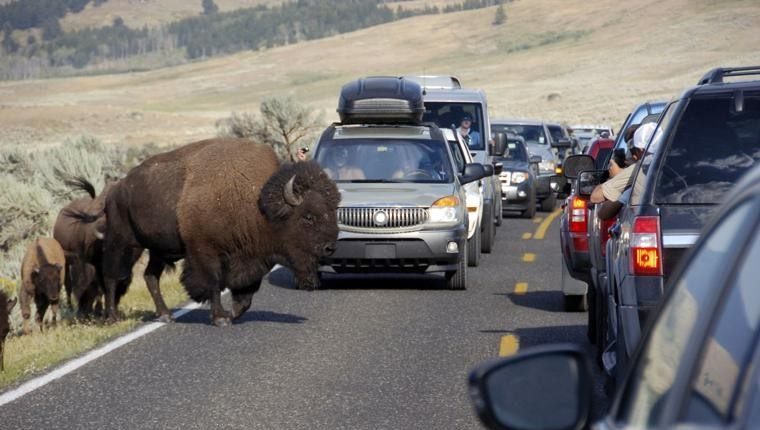Better access to the outdoors was one of the top reasons people moved to Montana over the past decade, a recent study found.
The Montana State University research discovered newcomers are most often trekking to lakes and other water bodies, or taking in cultural and community activities. Along with these activities, parks, trails and campgrounds were popular places to visit.
This is no surprise to Bozeman residents who have seen their community’s population soar. With the increase in new townspeople and visitors, problems at popular recreation sites have increased, said resident Richard Lyon. He cited heavy trail use, difficulty finding parking, long lines of cars to reach the Bridger Bowl ski area on powder days and a surplus of dog poop left in the woods as examples.
This prompts the question: Are we loving our woods and waters to their detriment? If that statement is true, what is the solution to overcrowded campgrounds, fishing access sites and trails? Should we build more? Where would the funding come from? Should prices for facilities like campsites be raised, or should more people (including nonresidents) be taxed to help pay for things like boat launches? The answers can be elusive.
More
This topic was addressed in part by a three-person panel during an MSU Osher Lifelong Learning Institute talk on April 8. Participating in the discussion were: Patrick Cross, executive director of the Absaroka Beartooth Wilderness Foundation; Pat Doyle, marketing director at Montana Fish, Wildlife & Parks; and Alex Sienkiewicz, district ranger for the Yellowstone District of the Custer Gallatin National Forest.
Cross started out the discussion presenting some statistics emphasizing the situation in his neck of the woods. Wilderness visits to the Custer Gallatin National Forest increased from 207,000 in 2009 to 440,000 by 2014, a 110 percent jump.
At the same time, the Forest Service nationwide has seen a 48 percent decrease in staffing since 2002 and a 27 percent decrease in appropriation dollars, adjusted for inflation.
“These are the wilderness rangers, these are the trail crews, these are the people who are there to help mitigate the impacts we’re seeing from the increased visitor use,” Cross said.
Another statistic emphasizing the growth in outdoor trips is National Park Service visitation. It has jumped from 26 million visitors in 1974 to 297 million in 2021. Nearby, Yellowstone National Park set a new attendance record last year with almost 4.9 million tourists.
At Montana State Parks, visitation jumped by almost 1 million between 2019 and 2020, according to Doyle. There was little room for increased use at campgrounds, he added, because many were already at 70 percent to 80 percent occupancy before the pandemic.
At what price point does a fee hike discourage participation and lessen competition for scarce resources like camping spots? Wouldn’t fee hikes make outdoor activities more elitist? Public lands are, after all, not just those who can afford to pay to play.
With state park facilities seeing more use, Doyle said a variety of problems have arisen such as more human waste, more garbage and parking violations, resource damage and an increase in the number of people not paying day-use fees.
“It’s an exciting time to be in outdoor recreation, not that it doesn’t have a lot of challenges,” Doyle said, but he enjoys seeing people visiting places they may have ignored until the pandemic. Now, he added, park visitors are learning more about Montana’s story.
Nothing new
Similar crowding problems prompted conservationist Aldo Leopold to pick up his pen in 1949, Sienkiewicz noted by reading a passage the author wrote.
“Recreation became a problem with a name in the days of the elder Roosevelt, when the railroads which had banished the countryside from the city began to carry city-dwellers, en masse, to the countryside,” Leopold wrote in Conservation Esthetic. “It began to be noticed that the greater the exodus, the smaller the per-capita ratio of peace, solitude, wildlife, and scenery, and the longer the migration to reach them.”
Sienkiewicz said, “This change has been occurring for a long time. I think Aldo probably thought he was pretty novel 75 years ago writing that, but it seems to have been going on for a long time. I think what we are seeing is rapid growth in use levels and volume.”
He went on to question whether the issue is one involving the number of people and crowding or if “other variables are at play.”
A recently published study in the White Mountains National Forest in New Hampshire was able to provide some answers by surveying visitors to the region during the peak of the pandemic.
“Study findings suggest visitor crowding and conflict, followed closely by visitor access and equity, should be a top priority for management and policymakers,” the researchers wrote.
They go on to write that high- and middle-income visitors are better at adapting to “pandemic related impacts” while low-income visitors are not. Also, “female visitors were significantly more susceptible to negative experiences and impacts.”
Education
To address the findings, the study’s authors suggest resource managers consider educating visitors before, during and after a recreation experience “in recreation norms, trail etiquette, (diversity, equity and inclusion), and Leave No Trace principles.” The education should focus on out-of-state visitors and residents of adjacent communities, they added.
Old truisms still make sense, such as: If you pack it in, pack it out. Leave only footprints, take only photographs. But what’s the best way to reach people, especially those new to outdoor activities who may know the least? Is a social media blitz across a multitude of platforms in order? Who will pay for these public service announcements?
At Montana facilities, FWP’s Doyle said his agency has chosen to market the benefits of responsible recreation rather than telling people what to do.
He pointed to some of the state’s partners in the tourism industry who have switched from a “destination marketing model” to “destination stewardship.” The state has a variety of recreate responsibly messages including: know before you go, plan ahead, explore locally, respect wildlife and build an inclusive outdoors.
The state is also using messages to encourage visitors to lead by example, Doyle said. The tag line that emphasizes this tack says: “Enjoy Montana’s state parks in a safe and responsible way that inspires others to follow in your footsteps.”
Educating agencies is also important, Sienkiewicz said.
“I believe that ecological data that helps managers make rational decisions that aren’t based on opinions or inclinations … the degree to which we can understand, not just ecology without humans but ecology with human uses on the landscape allows us as public servants and resource managers to make better decisions.”
‘Hedonism’
Writer Todd Wilkinson, whose website Mountain Journal covers a variety of environmental topics in the Greater Yellowstone Ecosystem, recently wrote about the problem he sees with advertising recreation in Montana when trails, rivers and lakes are already deemed crowded by many people’s standards.
“Will the blind promotion continue?” Wilkinson questioned in a recent story. “What are the limits for how much pressure Greater Yellowstone’s wildlife can take? When is enough enough, and will conservation organizations take the lead in helping the public, land management agencies, and developers realize what the threshold of enough is?”
Wilkinson goes on to quote Scott Bosse, Northern Rockies director of American Rivers, who wrote in a guest column for the Bozeman Daily Chronicle: “Recreation is about taking. It’s a form of hedonism. Conservation is about giving. Sometimes that means giving up the opportunity to recreate in certain places or at certain times of the year to protect wildlife. Sadly, far too many recreationists take without giving anything back. That’s why our conservation deficit is worsening in Greater Yellowstone and our wildlife is increasingly under siege.”
Interestingly, the MSU study of newcomers found that many “report high levels of engagement in their new community, including volunteerism, attendance at public meetings and establishing social connections.” Whether this volunteerism and public involvement is aimed at conservation issues was not addressed.
Another question Wilkinson poses relates to recreation and wildlife: “How does putting more humans into spaces populated by sensitive species better the survival prospects for animals actually living there?”
Partners
One thing all three MSU speakers agreed on is that partnerships are key to getting things done. Doyle cited the recreation partnership on the Clark Fork River that was established to address the mass of students floating the stream on inner tubes during the summer. He also pointed to a partnership with the Gallatin National Forest Avalanche Center at Cooke City that has increased education while reducing avalanche deaths. At one time Cooke City was unfortunately known as the most dangerous place in the United States to snowmobile.
These groups speak to the “recreate responsibly” ethos Montana State Parks has been advertising, Doyle said.
For the Absaroka-Beartooth Wilderness Foundation, volunteers were key to building and maintaining 58 miles of trails last summer, clearing 1,324 logs and installing 1,666 water bars. The group also relies on volunteers to educate trail users through an ambassador program. These people provided a 435 percent increase in volunteer hours last year, Cross said.
“The partnerships are a great complement for the agency crews but they’re not supposed to be a replacement,” he added. “So I think there’s more work we can do to support our partners.”
He suggested Montanans reach out to the state’s congressional delegation and urge more funding for federal land management agencies to do the conservation and recreation work important to residents and visitors.
Environment
The increase in recreation is coming at a stressful time for the environment. Drought continues to wreak havoc in much of the West. Lower, warmer water stresses fish and the entire aquatic ecosystem.
Drought is also increasing the risk and occurrence of wildland fires. Should Montana counties adopt zoning ordinances requiring people who build in rural areas to make their homes and surrounding lands fire resistant?
Should certain areas be set aside through planning to ensure wildlife have corridors to migrate, especially as the land they are utilizing is developed or becomes less productive because of drought or fires?
“I would argue there’s a lot more complexity at play in this conversation, and it’s not a simple problem or challenge, if we want to frame it that way,” Sienkiewicz said.
He also said he’s somewhat hesitant about saying increased recreation is a problem. There are many benefits — from health and wellness of individuals to financial boosts for economies, along with building a coalition that supports wild places, clean air and water.
“I love it when people use their public lands,” Sienkiewicz said. “It makes my heart sing. I don’t necessarily like adverse impacts, I don’t like loving-it-to-death problems, but I also feel like these are problems that we can manage through policy.”
